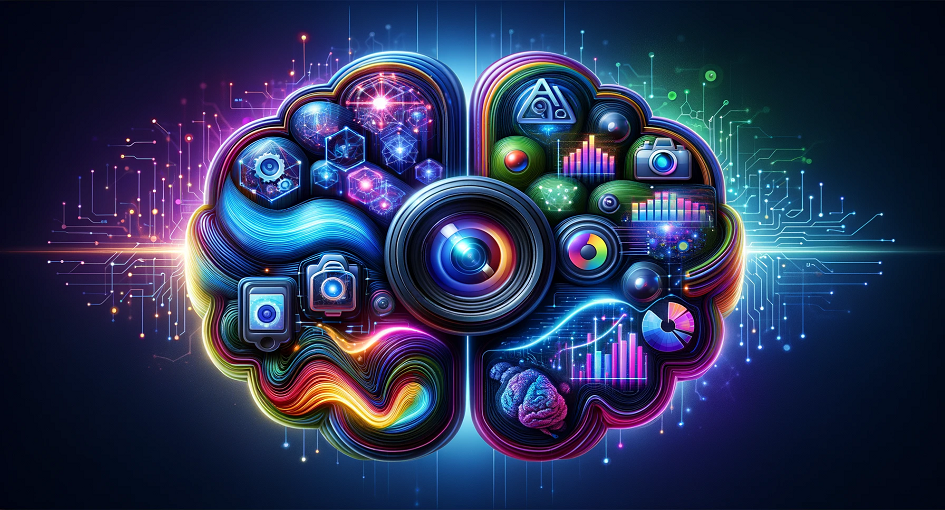
The development of GPT-4 Vision, an AI model equipped with advanced visual understanding capabilities, is poised to have a profound impact across various industries. This article explores the potential of GPT-4 Vision through concrete examples, sheds light on its limitations, and addresses the potential risks associated with this powerful technology.
In the realm of AI-driven visual intelligence, GPT 4 Vision is set to revolutionize various sectors. Its applications are diverse and promising. For instance, in the field of medical diagnosis, GPT 4 Vision can analyze medical images, such as X-rays and MRIs, to assist healthcare professionals in diagnosing diseases and conditions more accurately and swiftly. Autonomous vehicles, enhance safety and navigation by recognizing traffic signs, pedestrians, and other vehicles, allowing self-driving cars to make real-time decisions. In the retail and e-commerce industry, GPT 4 Vision simplifies the online shopping experience by understanding product images, offering detailed product information, suggesting related items, and even enabling customers to search for products using images. Furthermore, GPT 4 Vision aids in agriculture by monitoring crops and detecting diseases through aerial imagery, contributing to precision agriculture. Finally, it plays a crucial role in content moderation on social media platforms and websites, recognizing and filtering out inappropriate or harmful content, and making online spaces safer for users.
Despite its impressive capabilities, GPT 4 Vision has its boundaries. First, it heavily depends on the quality and diversity of the data it is trained on, which means that biases present in training data can lead to biased or inaccurate results. Second, GPT 4 Vision, while proficient at recognizing objects and patterns, may still lack common-sense reasoning, making it susceptible to misinterpretations, particularly in complex scenarios. Third, understanding context, sarcasm, or nuanced situations remains a challenge for this AI model. Lastly, GPT 4 Vision’s resource intensiveness limits its accessibility, as it demands significant computational resources, posing a challenge for smaller organizations or individuals.
The deployment of GPT 4 Vision comes with ethical and societal considerations. First, privacy concerns arise as GPT 4 Vision’s ability to interpret images can potentially infringe on privacy, leading to unauthorized surveillance and privacy breaches. Second, the AI model may inherit biases present in the training data, raising concerns about perpetuating stereotypes and discrimination in its visual interpretations. Third, security vulnerabilities emerge, as malicious actors can exploit GPT 4 Vision’s visual understanding for harmful purposes, such as deepfake creation or surveillance manipulation. Lastly, the automation of tasks previously reliant on human visual understanding may result in job displacement in various industries, including radiology, content moderation, and image analysis.
To responsibly harness the potential of GPT 4 Vision, various measures must be taken. Developers must ensure diverse and representative training data to mitigate bias and implement mechanisms for debiasing. Ethical AI frameworks should be followed to prioritize fairness, transparency, and accountability in the deployment of GPT 4 Vision. Regulation and oversight by governments and industry bodies are necessary to prevent misuse and set boundaries for AI applications. Furthermore, raising awareness and educating users and developers about the potential risks and ethical considerations is crucial in responsible AI adoption.

GPT 4 Vision represents a significant leap in AI capabilities. Its applications are far-reaching, from healthcare to autonomous vehicles, and its potential is immense. However, recognizing its limitations and addressing the associated risks is vital to ensure its responsible deployment and the protection of individual privacy and societal values. As GPT 4 Vision continues to evolve, its impact on industries and society will be a testament to our ability to harness AI for the greater good while safeguarding against unintended consequences.
In conclusion, GPT-4 Vision stands as a remarkable advancement in the realm of artificial intelligence and visual understanding. Its potential applications across diverse industries promise a future where AI-driven visual intelligence can enhance our lives in numerous ways. From healthcare to agriculture, autonomous vehicles to e-commerce, the transformative power of GPT Vision is undeniable.
Yet, as with any powerful technology, GPT 4 Vision comes with its set of limitations and potential risks. It is crucial to recognize these boundaries to ensure that the technology is harnessed responsibly. The heavy reliance on training data quality underscores the importance of diverse and unbiased datasets. The challenge of common-sense reasoning and contextual understanding reminds us that while AI can excel at pattern recognition, it may not possess the nuanced understanding that humans do.
Ethical and societal concerns loom large. Privacy, bias, security, and potential job displacement are all issues that need to be addressed as GPT 4 Vision becomes more integrated into our daily lives. The responsible deployment of this technology demands diverse training data, adherence to ethical frameworks, regulatory oversight, and robust education and awareness efforts.